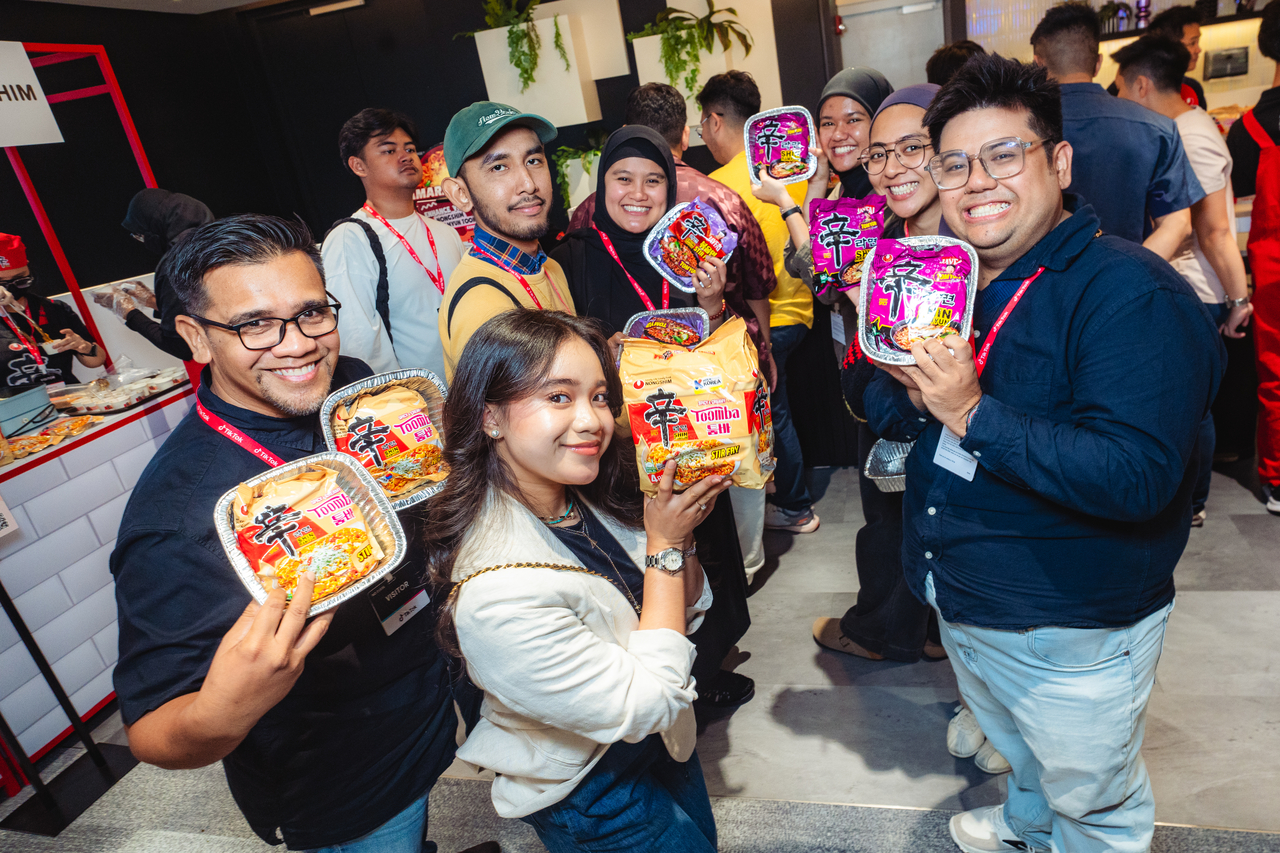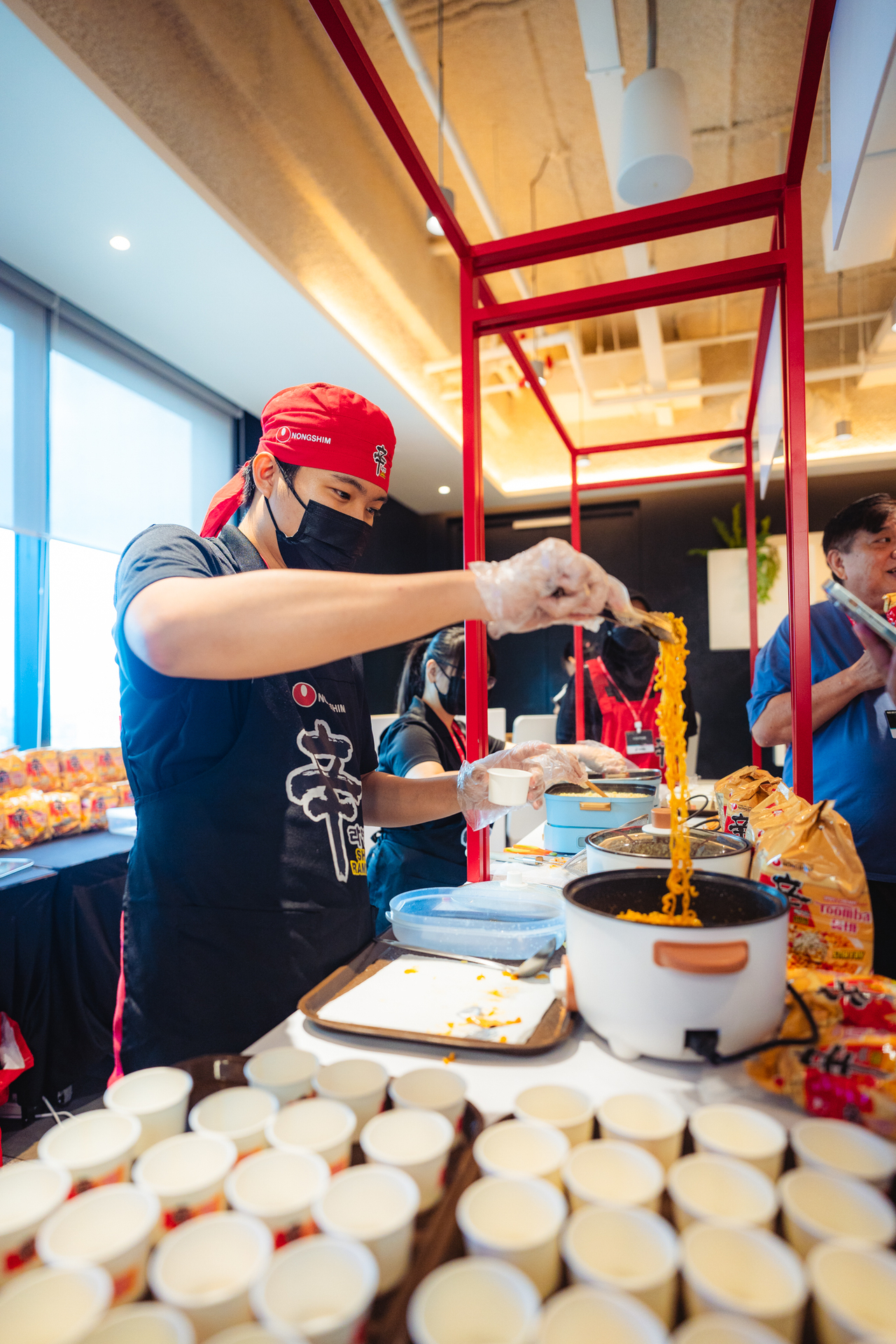May 21, 2025
SEOUL – In the heart of Asia’s culinary revolution, Korean instant ramyeon giant Nongshim — best known for its iconic spicy Shin Ramyun — is redefining how Korean flavors captivate global audiences.
Riding on the success of Shin Ramyun Tomyum in Thailand with a bold strategy of local adaptation, Nongshim is setting new standards for Asian food exports, driving global interest in K-food.
Nongshim’s breakthrough in Thailand began with a bold culinary collaboration.
In November 2023, the company launched two versions of Shin Ramyun Tomyum — soup and stir-fry editions — co-developed with Michelin-starred Thai chef Jay Fai.
Her restaurant has welcomed high-profile guests including Alibaba founder Jack Ma, Apple CEO Tim Cook, Hollywood actor Russell Crowe and even K-pop stars like Blackpink’s Lisa.
According to Kim Jun-tae, director of Nongshim’s Asia Sales Division, the partnership went far beyond marketing — it was a deliberate and detailed culinary exchange.
The result was a distinctive fusion of Shin Ramyun’s signature spicy flavor and the tangy, aromatic essence of Thailand’s beloved tom yum dish.
Nongshim’s top researchers visited Chef Jay Fai’s restaurant multiple times to study her techniques and understand her authentic flavor profiles, Kim recalled.
“We even invited her to our headquarters in Seoul for multiple tasting sessions, refining the recipe until we reached the perfect balance. It took over six months of back-and-forth development, with countless tastings and tweaks,” he said.
The launch became an instant sensation. In just eight months, sales in Thailand surpassed 5 million units, and the product quickly went viral on social media.
“When we introduced the collaboration in Thailand, it caused a huge buzz. We held launch events, invited top celebrities and influencers, and amplified the story online. It became so popular that people even started reselling the Thai version in Korea,” Kim added.
Nongshim’s strategy is straightforward: localize flavors without compromising the soul of Korean cuisine.
“In Southeast Asia, noodle culture is already highly developed, and competition is intense. Our approach is to anchor the Shin Ramyun brand locally, evolving it into a family of products with tailored flavor profiles,” Kim said.
While classic Shin Ramyun is famed for its bold, spicy beef broth, the company has diversified with regional variations — chicken-based versions for halal markets, stir-fried editions for Southeast Asia and adjusted spice levels depending on consumer preferences.
More recently, Nongshim has been promoting Shin Ramyun Toomba, a variation that adds ingredients like cheese, mushrooms and garlic to the original Shin Ramyun, creating a smooth, milky texture.
“For instance, countries like Thailand, Indonesia and Malaysia tend to favor spicier options, while Japan, Taiwan and the Philippines often prefer milder tastes,” he explained. “We don’t fundamentally change the core identity, but we offer products like Shin Ramyun Red for those craving extra heat.”
Kim analyzes that the rising popularity of K-food is largely fueled by Asia’s young, adventurous consumers — many of whom are already immersed in Korean pop culture.
“Our core consumers are students and young adults, especially influenced by K-pop and K-content. Most of our marketing and social media campaigns are aimed directly at them.”

Shin Ramyun Toomba’s launch event in Malaysia in March. PHOTO: NONGSHIM/THE KOREA HERALD
The trend is especially visible in Thailand, where Shin Ramyun has transformed from a spicy Korean staple into a premium, trendy product.
“Korean ramyeon is seen as a premium item there — not just because it costs more, sometimes three to ten times local brands — but because of its quality, packaging and distinctive taste. Likewise, youngsters in Southeast Asia are willing to splurge on premium Korean ramyeon. It’s become a fashionable choice.”
Nongshim has capitalized on the growing middle class and their appetite for high-quality experiences. “Some local customers even joke that after tasting Shin Ramyun, they can’t go back to their country’s local noodles.”
The global success of Korean films and dramas — such as the Oscar-winning Parasite, which featured ‘Chapaguri,’ a dish made by combining two of our products, Chapagetti and Neoguri — has further elevated Nongshim’s global appeal, the executive explained.
“We didn’t expect Chapaguri to gain such fame after Parasite, but we quickly launched it globally to meet the demand.”

A Nongshim staff member prepares Shin Ramyun Toomba for visitors during a promotional event in Malaysia. PHOTO: NONGSHIM/THE KOREA HERALD
Nongshim’s international sales have surged in recent years, with global markets now representing a major share of revenue.
In 2024, the company reported total sales of 3.44 trillion won ($2.6 billion), with exports to over 100 countries accounting for roughly 40 percent of that figure. Nongshim is now actively expanding its presence in Europe, South America, Africa and Oceania.
Performance in Asia has been particularly strong: in Japan, sales reached 13.5 billion yen ($92 million) in 2024, with a target of 20 billion yen by 2026. Last year, sales grew by 11.6 percent in Japan and 18.2 percent in Vietnam.
To meet such growing global demand, the company currently operates six domestic factories and six overseas: two in the US and four in China.
A new production line added to the US facility in October last year, along with a dedicated export-only plant under construction in Busan, set to operate in 2026, is expected to increase annual output to 6 billion units.
“Last year, we secured shelf space in major European retailers such as Leclerc and Carrefour, and earlier this year we established a European sales office in Amsterdam,” Kim added.
Nongshim is also investing heavily in innovation. Its factories now use AI and deep learning to monitor everything from noodle texture to packaging and expiration control. The company also launched a global marketing team last year to lead international campaigns and customize strategies for each target region.
Looking ahead, Nongshim remains focused on its global mission: to make Korean ramyeon a beloved staple around the world.
“We’re still in the early stages of building a premium, trendy image for Korean ramyeon among young consumers globally. The future looks promising.”


